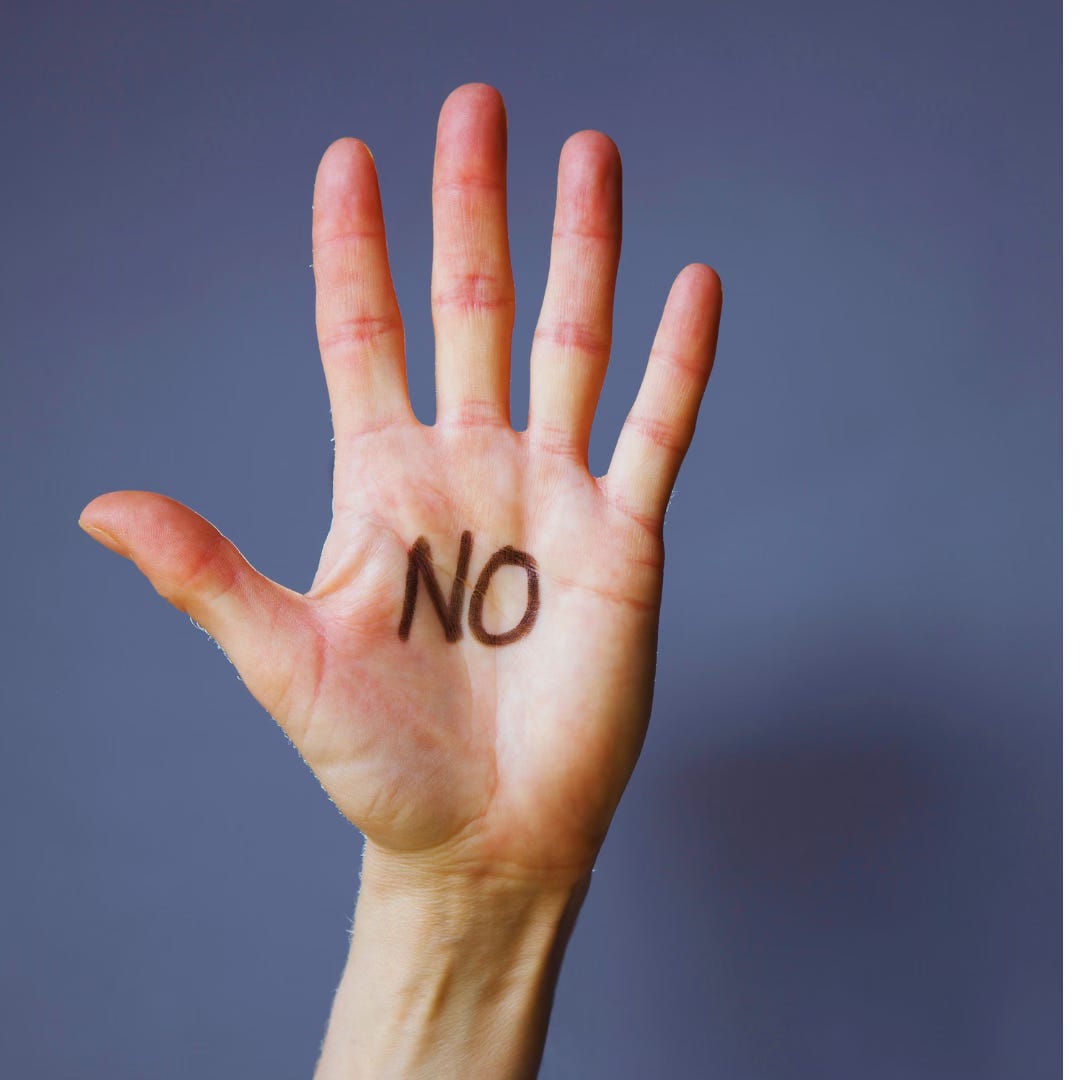Saying no is one of the hardest skills to master, but it’s also one of the most important. If you say yes to everything, you’ll end up overcommitted, overwhelmed, and, frankly, ineffective. The key is to say no in a way that preserves relationships, protects your time, and aligns with your values.
Here’s how to do it:
Know Your Priorities
Before you can say no, you need to know what you’re saying yes to. Identify your top priorities—whether it’s family, work, or personal growth—and let them guide your decisions.
As I’ve said before, at the end of your life, will you wish you attended more Zoom meetings or spent more time surfing with your kids? Probably the latter.
Be Fast
Do everyone a favor and decline immediately. This means less will be weighing upon your mind—as well as not having to deal with follow-up emails that bring things to the top of your inbox again. And it helps the requester move on.
You may be amazed, as I have been, that a fast no generates a grateful response: “Thank you for considering and responding. I didn’t think I’d even get any response at all.”
Also, if you keep delaying a response, you’ll feel more and more guilt about saying no. Eventually, that guilt might overcome your resistance, and you end up saying yes to something you don’t want to do.
Be Definitive
People appreciate clarity. If you can’t or don’t want to commit to something, say so politely but firmly. Don’t leave any door open to revisit your decision. Slam it shut and move on.
Dorie Clark suggests responding quickly and definitively to avoid procrastination and guilt. A simple “Thank you for thinking of me, but I can’t take this on right now” works wonders.
Be Positive
Instead of focusing on what you can’t do, emphasize what you can. Keep a stash of books, articles, videos, and other resources that may not replace you, but are nevertheless helpful—and better than nothing.
For example, when people ask me how to evangelize a product, I point them to this article in the Harvard Business Review, and if they want advice on how to innovate, I send them to this TEDx talk.
Set Clear Boundaries
Establish limits on your time and communicate them. Whether it’s not taking meetings after 6 PM or avoiding weekend work, make your boundaries known. For example, where I surf, the best conditions are at low tide. I hardly ever schedule meetings then.
Catherine Price, author of How to Break Up with Your Phone, recommends starting small—like not checking your phone first thing in the morning—and building from there.
Use a “No Buddy”
Juliet Funt suggests finding a “no buddy”—someone who can help you rehearse and refine your no’s. This is especially helpful for high-stakes situations, like turning down a project from your boss or declining a big opportunity.
The ultimate “no buddy” is ChatGPT and the like. These LLMs can help you craft work of art messages that decline and say no.
Saying no gets easier with practice. Start with low-stakes situations and work your way up. Over time, you’ll build the confidence to protect your time without feeling guilty.
Be Brief
You don’t owe anyone a detailed justification. A concise, respectful no is enough. Over-explaining can make you seem unsure or invite pushback.
Be Smart
Create and perfect a handful of standard rejections. Then make them “text replacements” that you can deploy by typing keyboard shortcuts such as “zdecline.” The explanation in these should be something that’s difficult to argue with.
For example, “I am focusing on writing a new book,” “My focus is Canva and my podcast,” or “I have semi-retired and want to maximize my time with my kids and grand kids” and then end with something positive such as “Your idea sounds exciting, but I just don’t have the bandwidth.”
Conclusion
Saying no isn’t about shutting people out—it’s about making room for what truly matters.
When you say no thoughtfully and respectfully, you’re not just protecting your time—you’re setting an example for others to do the same. And that’s how you stay remarkable without losing your sanity.
Mahalo!
Guy






Great advice. Thanks.
I don’t know if I ever really learned the word no.
Not deep in my bones. Not in the way that feels safe and final and mine.
Now I’m living my life meeting things halfway, with maybe or maybe not. With a quiet kind of surrender. With go along to get along. With letting other people decide what I wanted, because that felt safer than choosing wrong.
I’m still learning what I want.
Still asking myself what I like, what I don’t like, what I’m curious about, what I’m done with. And some days, I don’t know the answers.
Because when your choices have been made for you for so long, by fear, by men, by trauma, by circumstance, it takes time to remember how to choose at all.
It’s not just about yes or no. It’s about me. Who is she? What does she want? What does she believe? What does she deserve?
I’m still meeting her.
Still rebuilding that connection, doing it gently, honestly, slowly.
It’s strange to be this age and still be asking, Who am I?
But maybe that’s the bravest thing I’ve ever done, not pretending I know, but letting myself find out if I’ll ever be able to say the word emphatically “no”.
Maybe, Rose